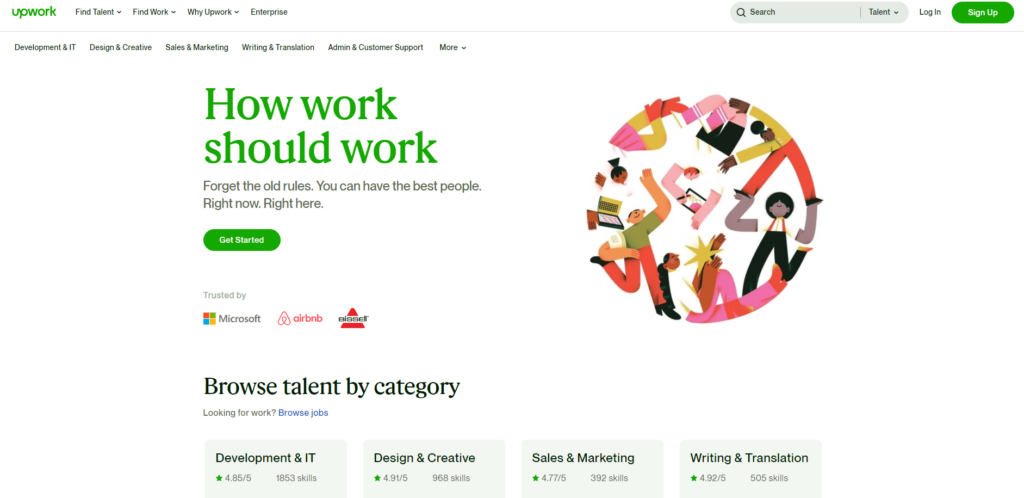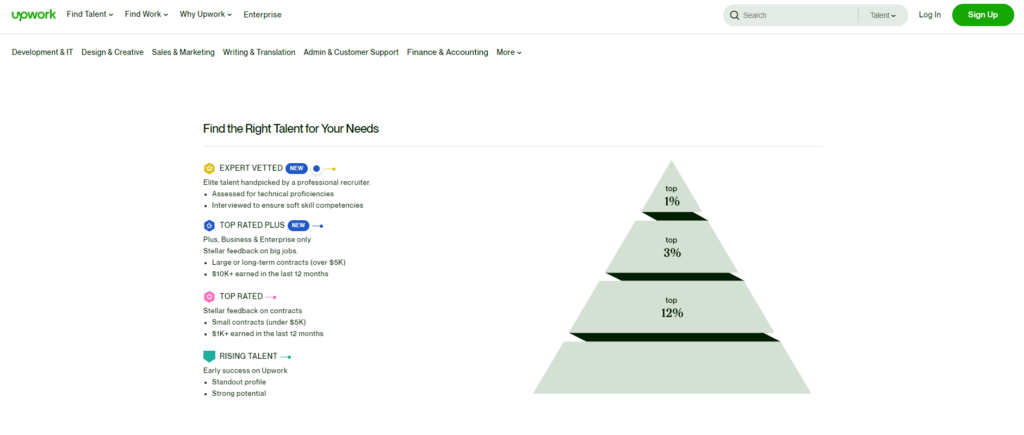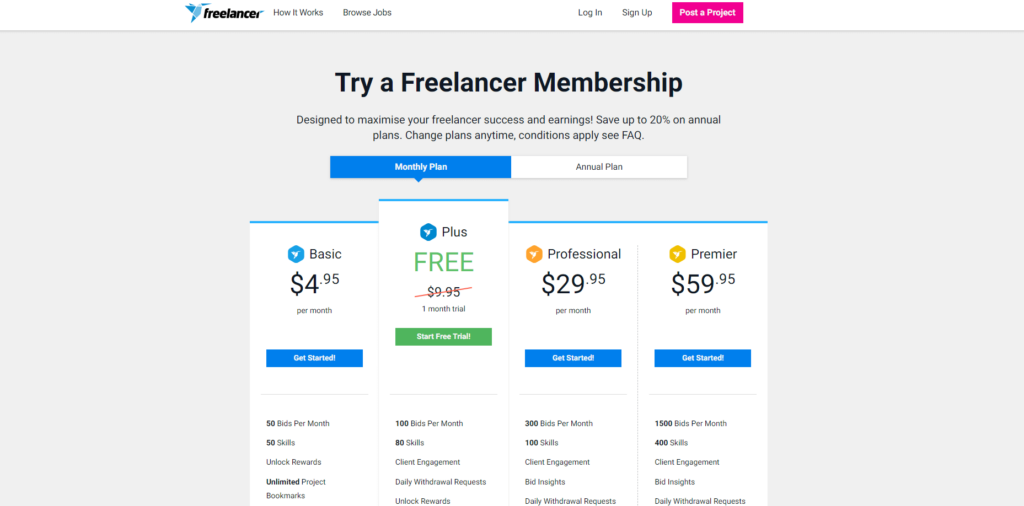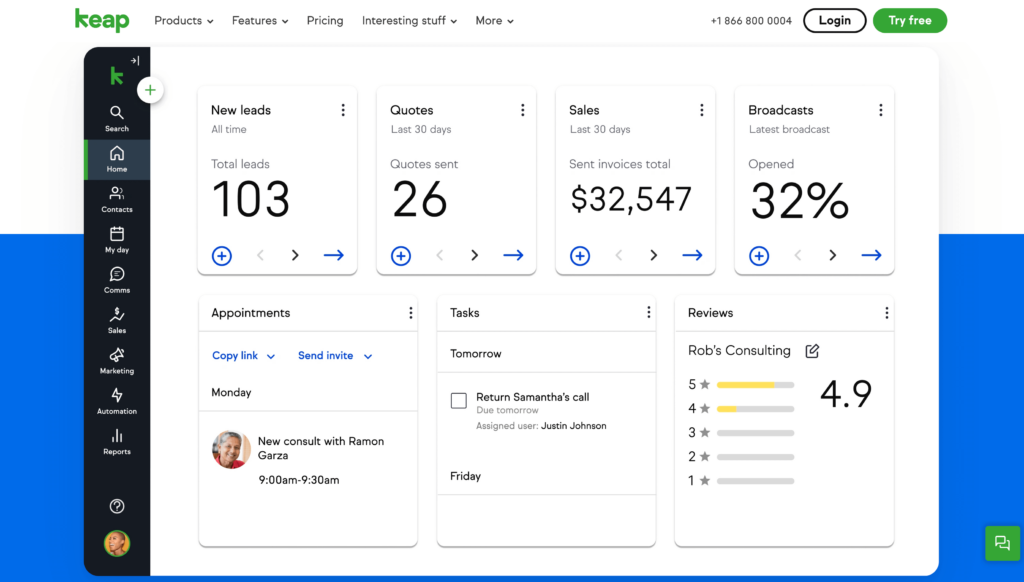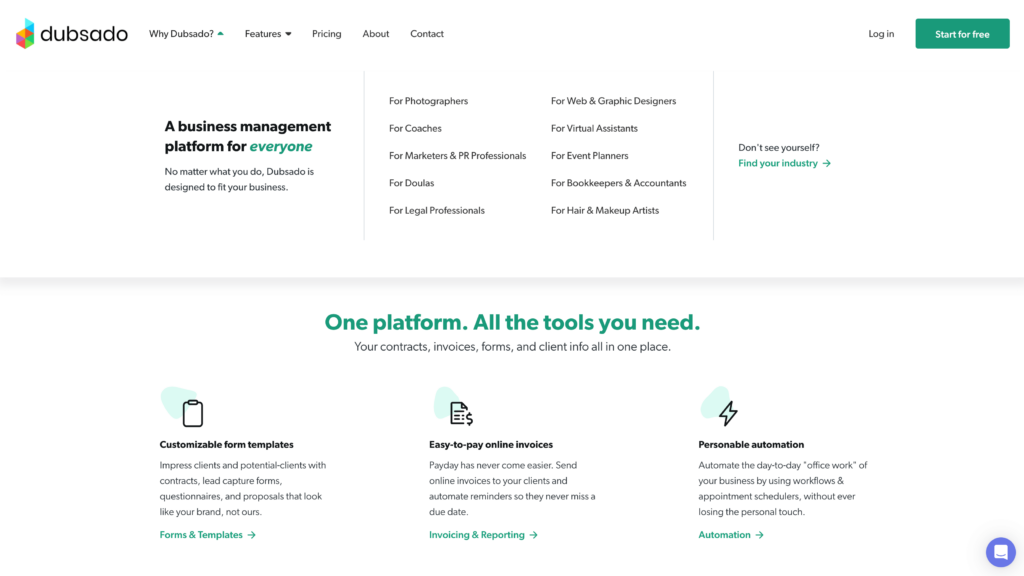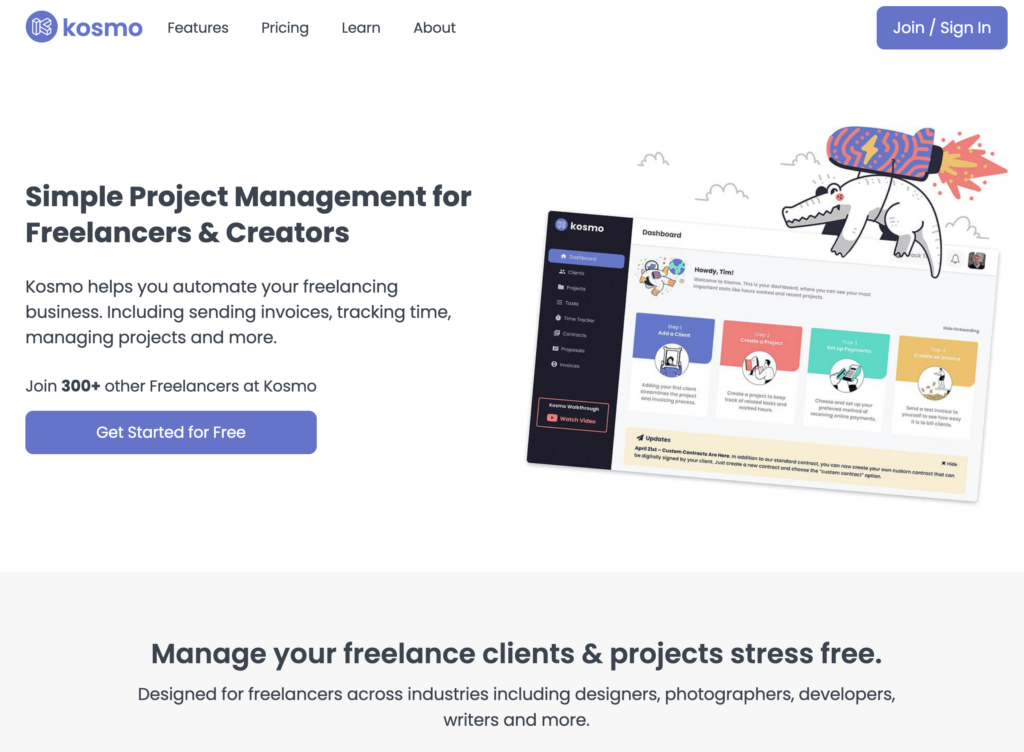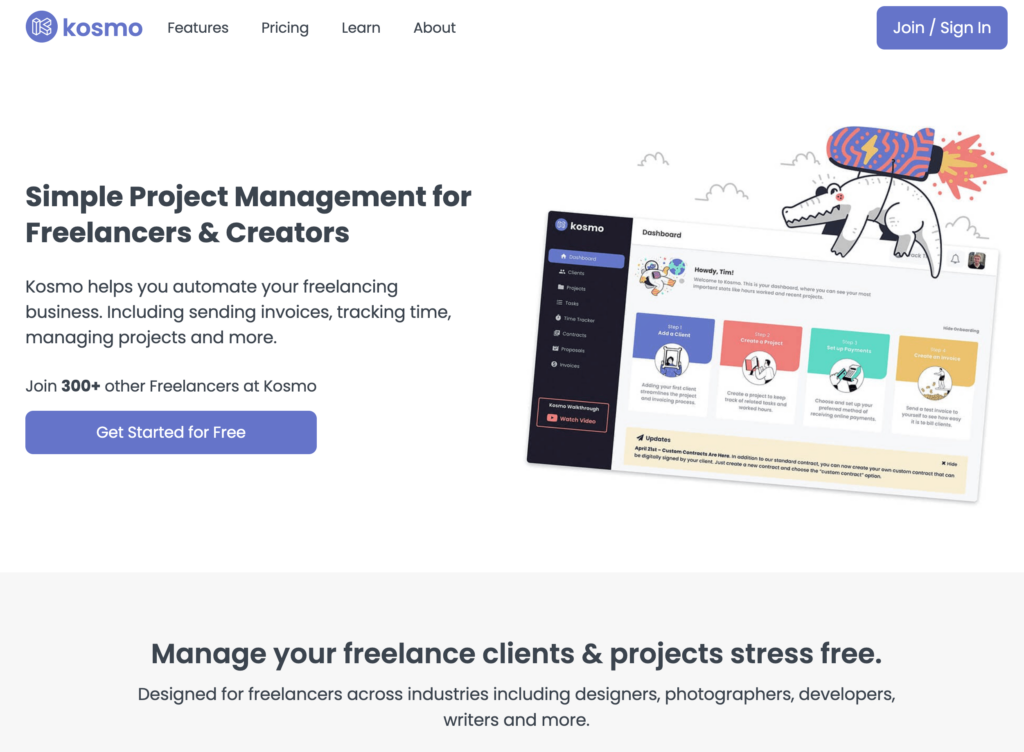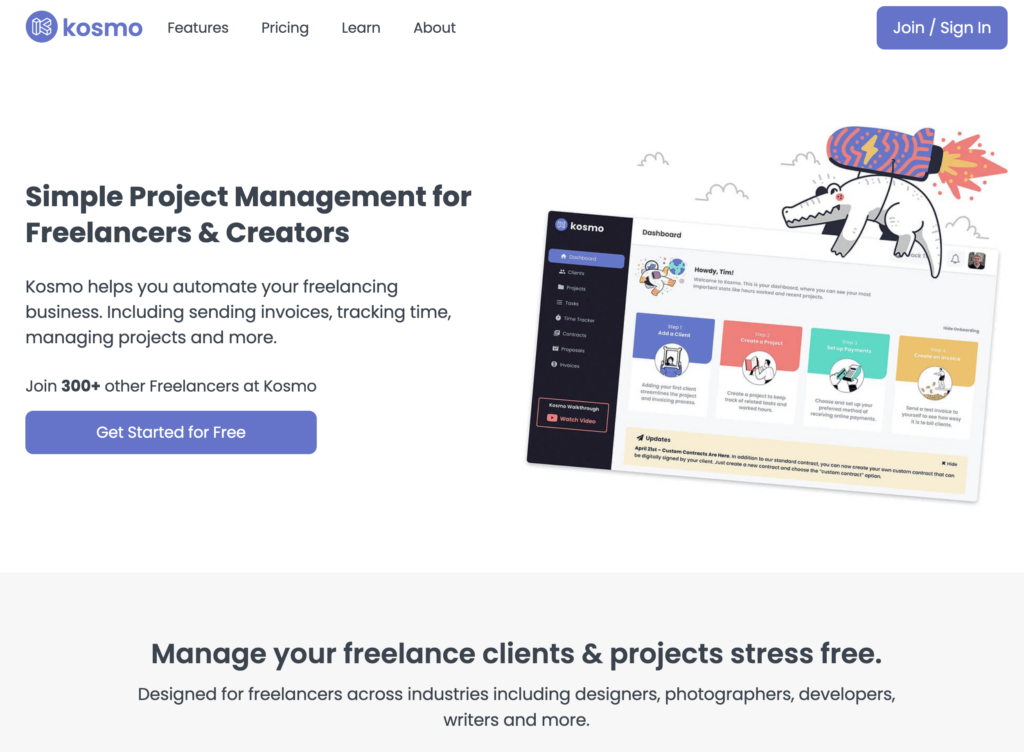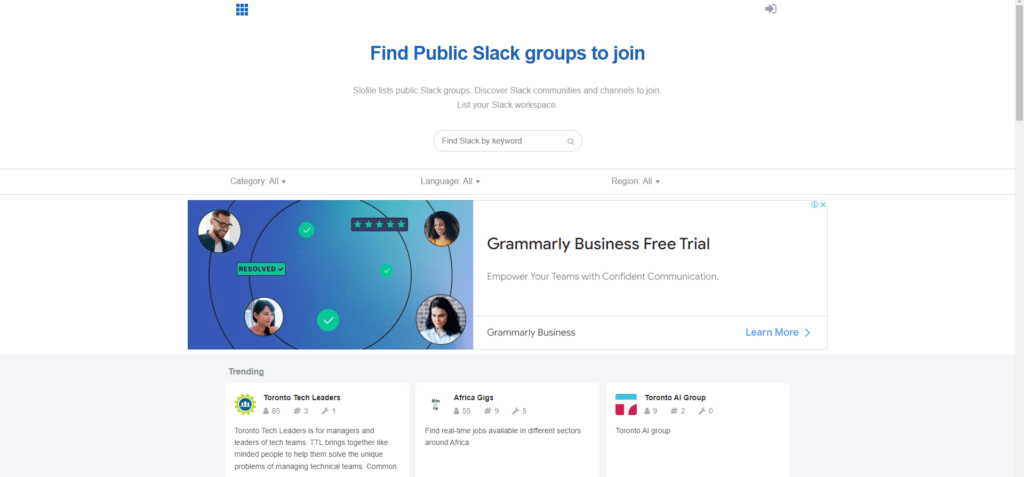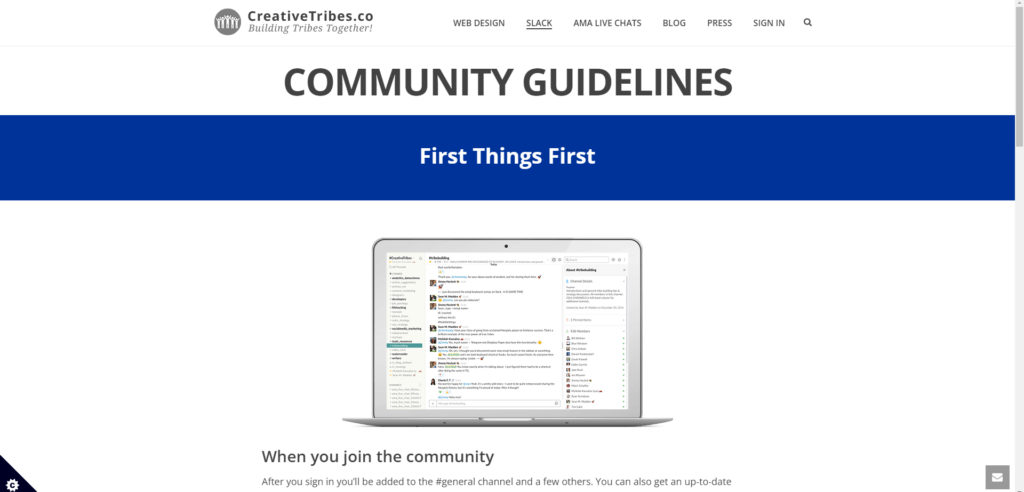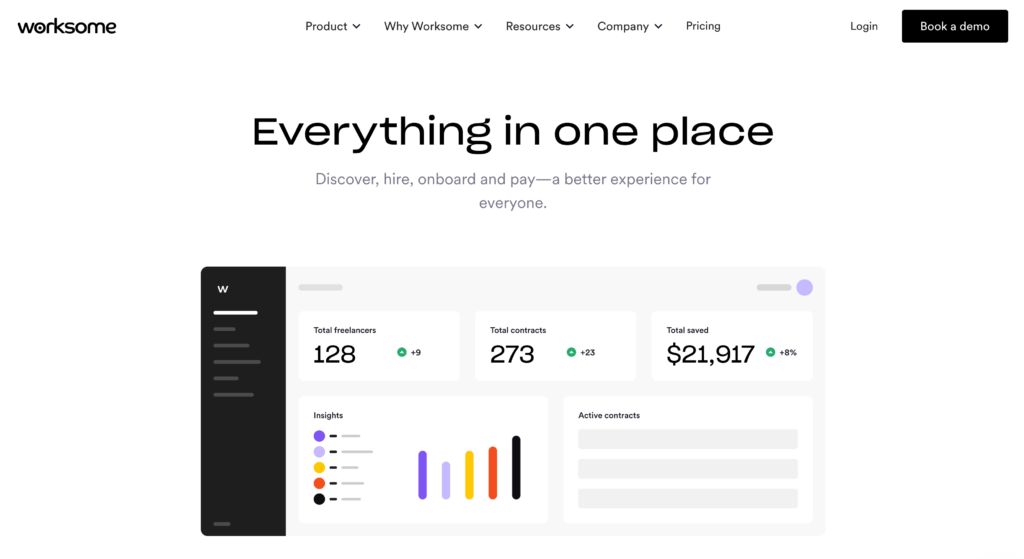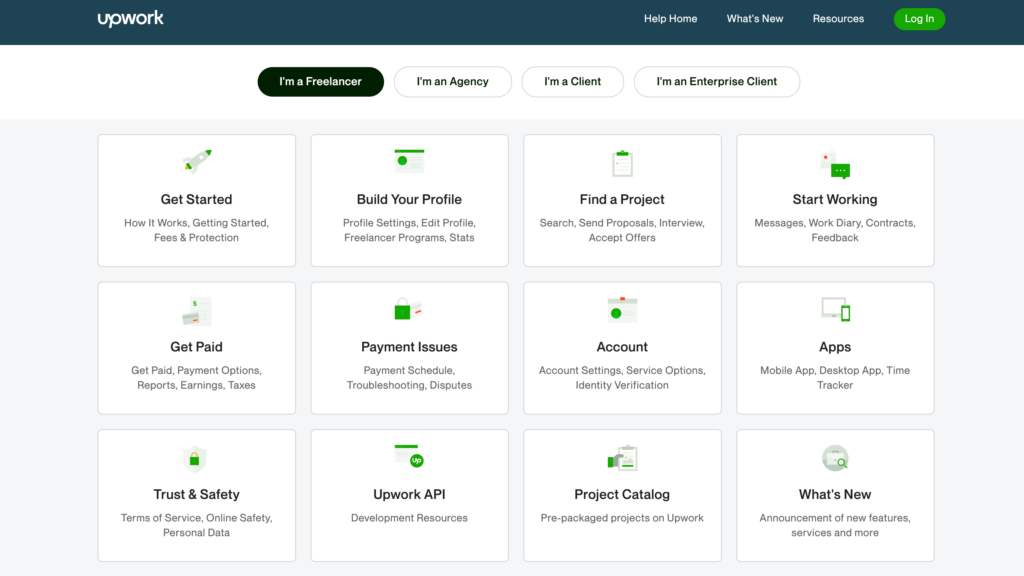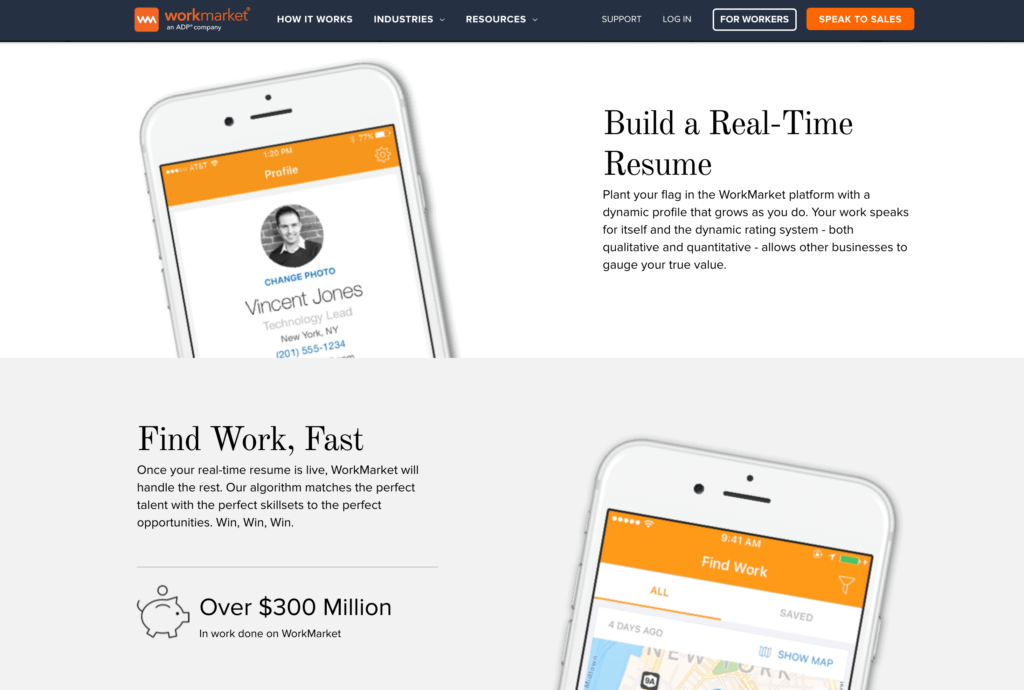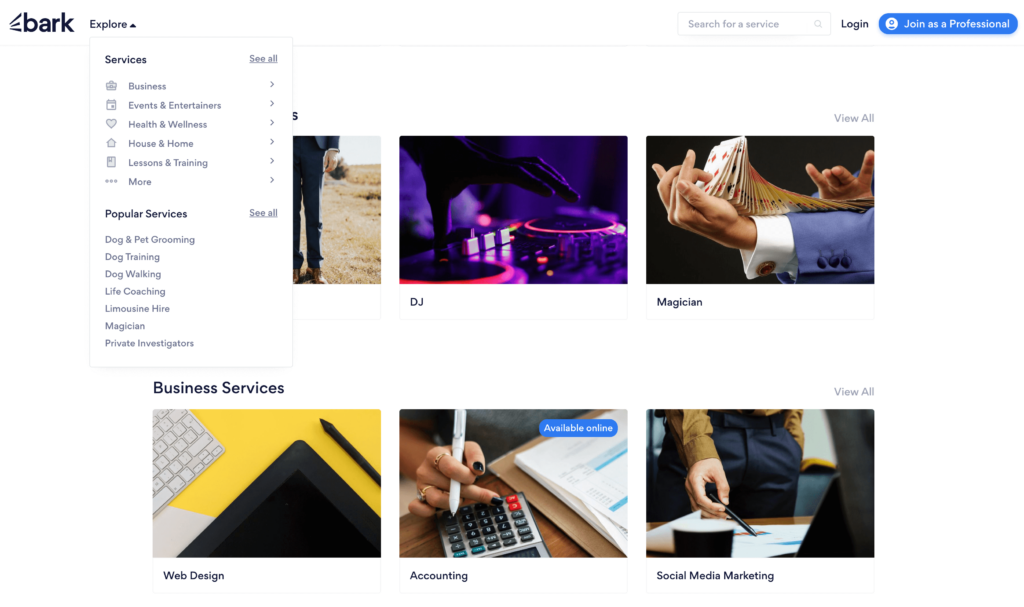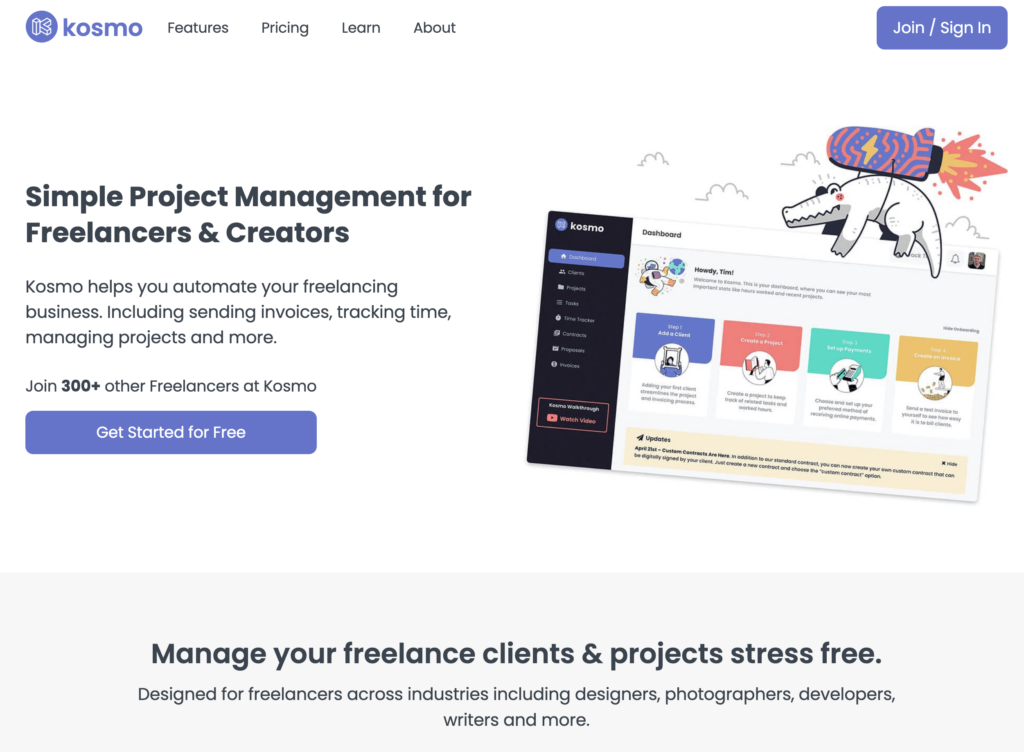Best Customer Portals for Freelancers
They say that as a freelancer, your clientele is your most important asset. And so, to maintain good client relations, you need to know and explore the best customer portals available.
Understandably, you make efforts to improve your technical skills so you can deliver jaw-dropping projects. However, you should not take client relations for granted. After all, your client’s reviews are the keys to a continuously busy business. If your customers find it hard to deal or transact with you, not only will you lose returning clients, but you will miss out on potential clients through referrals and testimonials.
Thankfully, technology has found a way to help freelancers bridge the gap between clients and freelancers. Customer portals are now available for you to use to make the customer experience better.
What is a Customer Portal?

A customer portal is a central access point for businesses and clients to share product information, project data, and track support tickets. It serves as a self-service support platform that can have one or more of the following services:
- Support Tickets/Self-Help. A good customer portal serves as a self-help platform for clients. A support ticketing method will help you as a freelancer manage inquiries and product complaints easier. Also, instead of waiting for an email response from the business or calling the freelancer, clients can read through a self-help page or an FAQ to see if their concerns can be addressed. Some portals have chatbots too.
- Document Management. Some customer portals provide document-sharing features. Clients are given access to their contracts, invoices, and other records. Just make sure that these are password-protected!
- Product Tracking. Clients will want to know the progress of their orders. Through a customer portal, they can be updated on product deliveries or project development.
- Branding. In choosing a customer portal, it is wise to pick the one that would allow you, the business owner, to brand the portal. Simply put, it should be customizable so the clients will know that they are on the correct page. This is also an excellent way to show that you are running a professional business.
- Business Information. Maximize customer portals that offer pages where you can provide tutorials, product or service information and updates, terms and conditions, and again, FAQs.
- Community Forums. To create a more friendly space, some businesses prefer customer portals that have community-sharing pages, discussion boards, or forums.
- Bonus: Billing & Payment. A customer portal can also have a billing and payment page. Clients can simply access their invoices, and a payment method will be provided as well.
As a freelancer, you should always, always keep in mind that the digital customer experience is crucial to your business. Your customers will expect swift resolutions to problems, easy access to project-related documents, and, basically, a good communication platform.
Best Customer Portals
As the freelance workforce consistently grows, software innovations make it easier to run small businesses. And because freelancers do not have the luxury of having several employees to man each business aspect, must-have software that aids in running a business has become more available. You wouldn’t spend for a dedicated customer support team, right? Good thing there are customer portals now to handle your client relations.
Zendesk
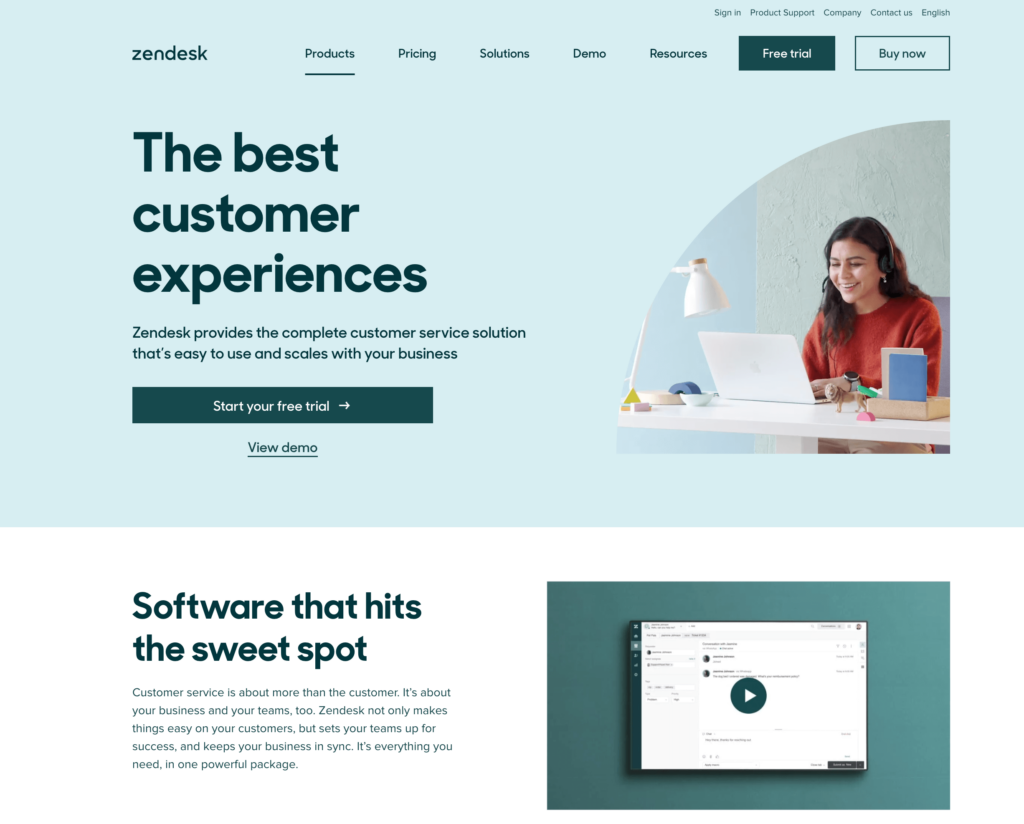
Zendesk anchors its services on its help desk system. It boasts of its seamless, personalized support receiving inquiries from your customers from their preferred channel. The user-friendly and flexible software makes organizing and managing the concerns you receive easy. Zendesk offers a variety of productivity features that include:
- Ticketing System. Zendesk’s fully integrated system ensures you will not miss a ticket. Customer concerns can be submitted via email, website, messaging apps, or social platforms. Your customer will receive a notification that the ticket was successfully submitted. Customers can also easily check the status of their inquiries or requests.
- Messaging and Live Chat. Customers can easily start a conversation through the Zendesk web widget. They also offer a chatbot to ensure that you deliver responses at any time of the day.
- Community Forums. Zendesk provides a platform for your customers to connect and discuss your product or service. Even if you are not available, some good clients may be able to help others seeking answers.
- Reporting and Analytics. The data provided can help you get an overview of the customer experience. You can also review and see the common problems your customers face, so you can prioritize which systems you need to improve on.
Zendesk offers a lot more features like customization, file management, self-service options, and billing services.
Huddle
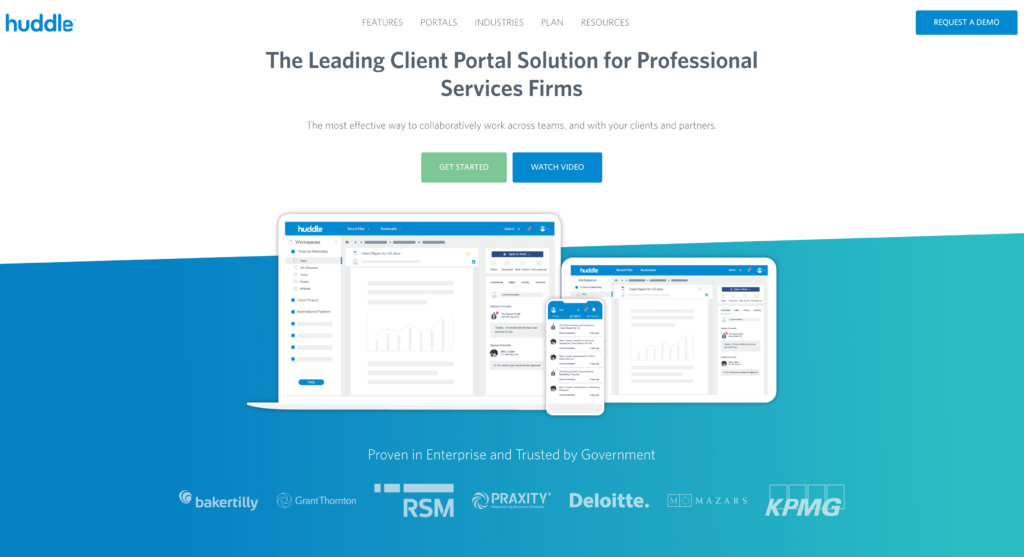
One of the best customer portals is Huddle. Huddle is best used for document and team collaborations. With its large storage space, file management won’t be a problem. If you are a writer, this may be a good software for you. You simply upload your article and share it with your clients. Huddle takes pride in its government-grade security, which ensures that sensitive data is well protected.
- Workspace. With the Huddle workspace, you can manage content and approvals with your client. Your documents have a comment stream so your conversations remain specific to the right content. It also has a “document comparison” feature so you can see the changes made on each version.
- Secure File Sharing. Since Huddle is cloud-based, clients can easily access your files through a computer, tablet, or mobile device. And because of this feature, you no longer have to search and trace for that email attachment! The best part is that you can set permissions to control access and ensure that only the right people can see your file.
Huddle is an excellent and secure file-sharing software. It is best for freelancers, independent contractors, and consultants who handle sensitive data and need a safe platform to collaborate.
Freshdesk
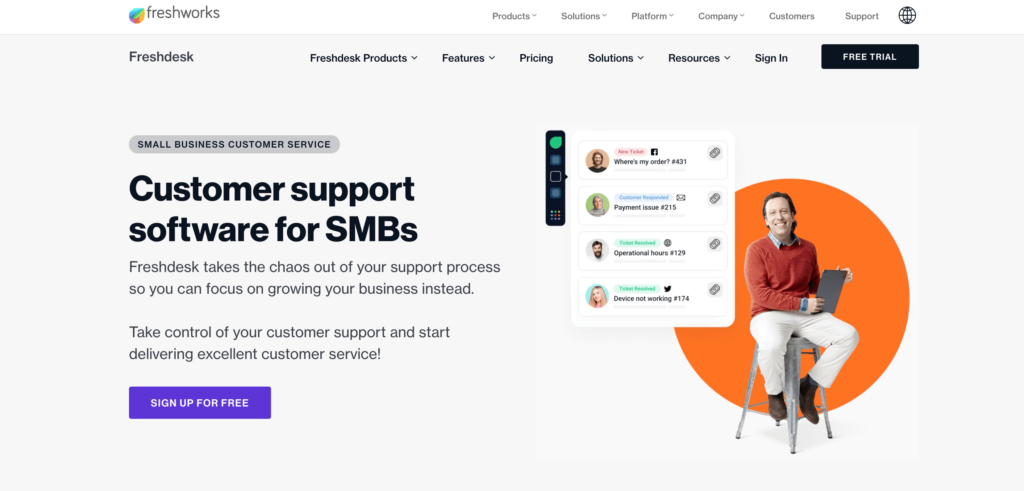
Freshdesk is another online cloud-based helpdesk support system designed to provide effortless customer service. You can publish an FAQ portal for your clients as part of their customer service solutions. Freshdesk offers solutions to different business sizes. So, whether you are an enterprise or a small-scale business, this software has a feature most suitable for you.
- Ticketing. Like Zendesk, Freshdesk offers an integrated ticketing system. Freshdesk will convert issues and inquiries that you receive from any channel.
- Automation. Freshdesk’s AI-powered ticketing system scans through received tickets. It helps you prioritize and categorize each concern based on past tickets.
- Reporting and Analytics. Freshdesk helps you monitor and measure customer satisfaction.
Freshdesk also offers customer service solutions for businesses with teams or agents handling client management.
Hectic

Aside from offering other business management solutions, Hectic has a client portal that promises a perfect client experience. The platform allows you to customize the look and feel of your portal. Hectic allows client-freelancer collaboration. Your clients can schedule a meeting with you through the portal, track progress, sign documents, and pay for invoices. You and your client can also share notes and files securely.
Bonus Tip!
As a freelancer who usually runs a business unaided by an employee or staff, you can get overwhelmed with all the tasks you have on hand. Relax, it happens to everyone. Instead of worrying about managing all your duties like admin work, marketing, client management, and the actual project completion itself, arm yourself with a project management tool to make your life less stressful.
Kosmo is a simple and complete project management system you can use to run your business efficiently. It has features like:
- Client and File Management. Create a client file and a project folder complete with all the details you will need. Kosmo offers templated and customized proposals and contracts. You can integrate this in your project file folder.
- Time and Task Tracking. Track and manage your tasks by recording the time for each session. This is a very convenient feature, especially for freelancers who charge hourly rates. You can also see the progress of your project as you go along.
- Invoice and Payment. You can easily generate customized invoices, track payments, and receive reminders when a payment is late. It also allows you to collect payment through payment modes such as credit cards, ACH transfer, and Paypal.
Another cool feature of Kosmo is that it has an income goal tracker. As a result, your income tracker increases as you mark your invoices paid. This way, you have an overview of how close you are to your income goal.
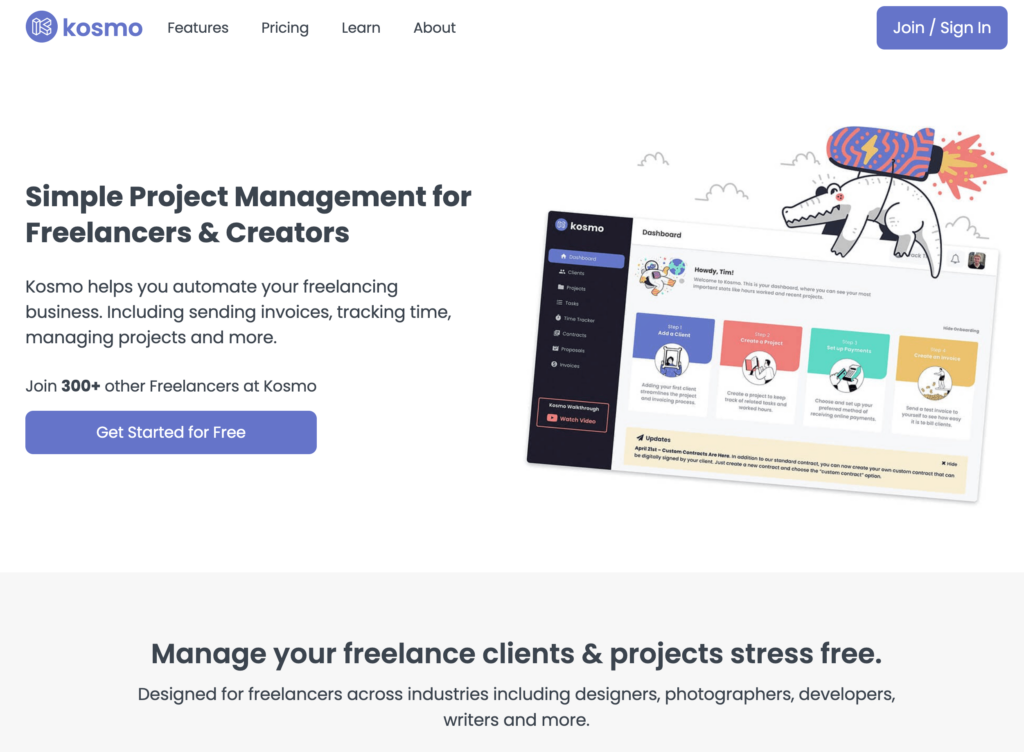
Conclusion
In almost every freelance tip and guide you read, you will see how clients’ feedback affects a business. Every review, testimonial, or referral, can be translated into a business opportunity. And as a freelancer, you do not want to miss that opportunity.
One way of building positive relationships with your clients is to see to it that they have a good experience with your business, and this includes customer support. Now, with the best customer portals available, you can ensure that your customers are in good hands.
Get Organized & Win More Clients
Kosmo has everything you need to run your freelancing business.






